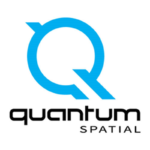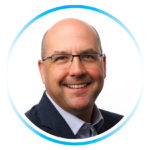 LIDAR Magazine was invited to attend Quantum Spatial’s fourth user conference, entitled Acquisition Summit 4.0, in the university town of Corvallis, Oregon, on 1-3 October 2019. The meeting attracted 178 attendees, quite an increase from the 72 at the first meeting in Sheboygan, Wisconsin in 2016. Indeed, 30 hopeful registrants had to be turned away and, still, some of the plenaries were standing room only. Attendees included not only customers of Quantum Spatial, which is the largest mapping company in the US, but also partner companies which provide assistance in the vast data acquisition effort that Quantum Spatial mounts every year. Quantum Spatial’s sensor suppliers were there too: Applanix, Hexagon, ITRES, Phase One, Riegl, Teledyne Optech and Vexcel Imaging, fresh from their myriad of product announcements in Germany in September, all sent strong teams.
LIDAR Magazine was invited to attend Quantum Spatial’s fourth user conference, entitled Acquisition Summit 4.0, in the university town of Corvallis, Oregon, on 1-3 October 2019. The meeting attracted 178 attendees, quite an increase from the 72 at the first meeting in Sheboygan, Wisconsin in 2016. Indeed, 30 hopeful registrants had to be turned away and, still, some of the plenaries were standing room only. Attendees included not only customers of Quantum Spatial, which is the largest mapping company in the US, but also partner companies which provide assistance in the vast data acquisition effort that Quantum Spatial mounts every year. Quantum Spatial’s sensor suppliers were there too: Applanix, Hexagon, ITRES, Phase One, Riegl, Teledyne Optech and Vexcel Imaging, fresh from their myriad of product announcements in Germany in September, all sent strong teams.
Quantum Spatial’s data acquisition capabilities are considerable: the company continues to add new sensors and attempts to make these interchangeable amongst its 13 aircraft, which in 2018 captured 163,000 square miles of lidar and 491,000 of imagery. Opening remarks from Quantum Spatial’s president and CEO, Peter LaMontagne, who, your managing editor is pleased to note, has a classics background, emphasized a theme that reappeared several times during the meeting: customers are demanding more data, more types of data, more often, at higher resolutions and fidelity, with more analytics and insights. Quantum Spatial must continuously innovate in order to outrun its very able competitors.

President and CEO, Peter LaMontagne
The agenda was a disparate one. There were remarks from an Oregon State University (OSU) post-doc on climate change, followed by a presentation on Quantum Spatial’s sophisticated approach to flight planning, honed over time to maximize data acquisition when weather allows, then an intriguing look at the dilemmas involved as US government agencies grapple with the challenges of certification of airborne lidar systems. Digital Scan 3D provides a service to scan the insides and outsides of Quantum Spatial’s aircraft, resulting in CAD drawings that are included in the thick files of documentation accompanying each plane. USGS gave an update on 3DEP and another presenter from OSU discussed the difficulties of flight planning for topobathymetric lidar and the need to be flexible if the number of possible acquisition windows is not to become uselessly small.
On the Thursday morning, some of us were bused to Quantum Spatial’s facility in Corvallis, where we heard from the company’s technical experts on several developments – a multi-sensor system in a pod for helicopter use along corridors; a robot for acquiring data inside electrical transmission stations; a rapid response capability; an increasing focus on topobathymetric lidar; and the growing demand for hyperspectral data and information derived from it.
LIDAR Magazine gave a presentation to solicit contributions from prospective authors in the audience. We provided motivation by arguing that the capacity and capabilities of geospatial service companies have reached a remarkable level and continue to grow, so it is apposite to shout about the achievements. The appeal was well received and we hope to publish a series of pieces about Quantum Spatial, starting with an interview with its CEO, and its partners. We are grateful to Quantum Spatial – and, in particular, senior vice president Mark Meade – for the opportunity and for masterminding a most informative event. As user events increasingly grab the headlines from traditional conferences, it is stimulating to witness how lidar is a mission-critical, operational and rapidly advancing technology.